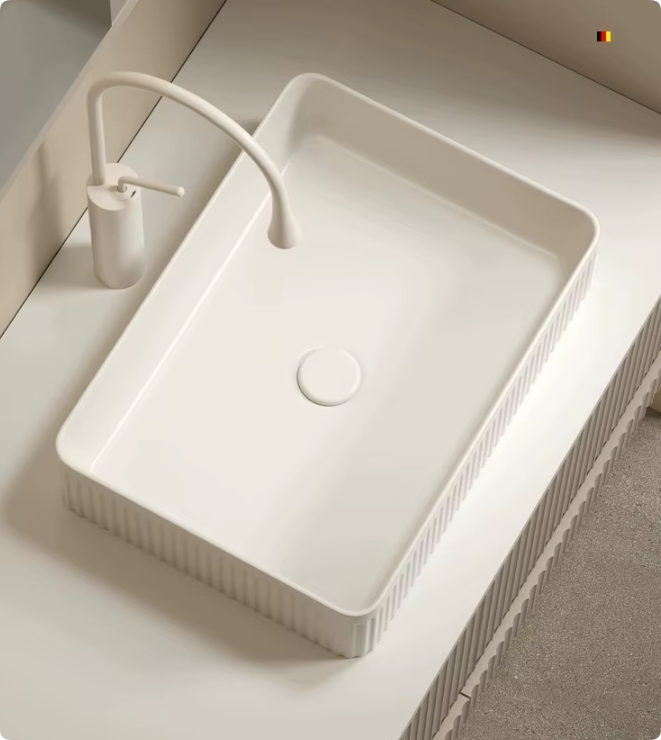When designing a bathroom, color matching plays a vital role in shaping the overall aesthetic and ambiance. Whether for a private home, a hotel project, or a commercial space, the right color choices can enhance functionality, improve the user experience, and add significant value to the property. But how exactly does color coordination affect bathroom product design, and why should global buyers, builders, and designers pay close attention to it?
In this article, we’ll explore the significance of color matching in bathroom spaces, how different color schemes impact mood and perception, and how to achieve a balanced, stylish look with ceramic toilets, washbasins, bathroom cabinets, and smart bathroom products.
Why Is Color Matching Important in Bathroom Design?
Bathrooms are no longer just functional spaces—they are personal retreats that reflect style and comfort. A well-coordinated color palette can:
- Create a cohesive and luxurious feel – When colors are harmonized, they create an elegant and high-end appearance, which is especially important in hotels and upscale residences.
- Influence mood and ambiance – Certain colors evoke calmness, warmth, or energy, shaping the way users feel in the space.
- Enhance visual spaciousness – Light and neutral colors can make small bathrooms feel more open, while darker tones add depth and contrast.
- Increase property value – A well-designed bathroom with a pleasing color scheme is more appealing to buyers and renters.
The Psychological Effects of Different Bathroom Colors
Each color carries psychological and emotional effects, impacting the way people experience the space. Below is a comparison of popular bathroom color choices and their effects:
| Color | Psychological Effect | Best Used With | Ideal For |
|---|---|---|---|
| White | Clean, fresh, minimalistic | Chrome fixtures, marble, light wood | Modern and minimalist bathrooms |
| Gray | Elegant, neutral, sophisticated | Matte black accessories, stone textures | Contemporary hotel and residential spaces |
| Beige | Warm, inviting, natural | Wooden cabinets, soft lighting | Cozy, spa-like environments |
| Black | Bold, dramatic, luxurious | Gold or brass accents, glossy surfaces | High-end hotel and luxury bathrooms |
| Blue | Calm, relaxing, serene | White ceramics, silver fixtures | Coastal, spa-inspired, or family-friendly bathrooms |
| Green | Refreshing, nature-inspired, tranquil | Wooden vanities, natural stone | Eco-friendly or wellness-focused spaces |
Choosing the right color scheme depends on the atmosphere you want to create. For instance, hotel projects often opt for gray or beige for a timeless, elegant look, while smart bathroom products with LED lighting work best in modern, monochromatic schemes.
How to Match Bathroom Products for a Cohesive Look
1. Coordinate Fixtures and Furniture
When selecting ceramic toilets, washbasins, and bathroom cabinets, ensure they align with the overall bathroom palette. A glossy white ceramic washbasin pairs well with modern gray or black tiles, while beige bathroom cabinets complement warm, earthy tones.

2. Consider Material and Finish
Different materials reflect color differently. For example, matte black toilets and washbasins create a sleek, high-contrast effect, whereas porcelain with a glossy finish enhances brightness and spaciousness.

3. Use Smart Technology to Enhance Color Schemes
Smart mirrors with adjustable LED lighting allow users to modify color temperature, making it easier to match different design aesthetics. Warm lighting pairs well with wood and neutral tones, while cool lighting enhances modern white and gray themes.
4. Balance Dark and Light Tones
If using dark colors like black or deep navy, balance them with lighter elements such as white ceramic toilets or light wood bathroom cabinets to prevent the space from feeling too enclosed.
5. Think About Long-Term Trends
Neutral tones like gray, beige, and white remain timeless and adapt well to evolving trends. If incorporating bold colors, use them in accessories or smart bathroom products rather than permanent fixtures for flexibility.
FAQs
1. What is the best color for a small bathroom?
Light and neutral colors like white, beige, or soft pastels are best for small bathrooms, as they create a sense of openness and brightness.
2. Can I mix different colors in my bathroom?
Yes, but it’s best to stick to a cohesive palette. A mix of two to three complementary colors ensures balance without overwhelming the space.
3. Do black bathroom products make a space look smaller?
Not necessarily. When paired with light-colored walls or reflective surfaces, black toilets, washbasins, and cabinets add depth and sophistication without making the room feel cramped.
4. How do I match smart bathroom products with my color scheme?
Choose smart products with adjustable lighting, such as LED smart mirrors, to complement various color palettes. For modern designs, opt for black or white fixtures with sleek finishes.
5. Are bold colors trendy in bathroom design?
Yes, bold colors like deep green, navy, and black are trending, especially in luxury hotels and high-end residential bathrooms. However, they are often balanced with neutral tones for a timeless look.
Final Thoughts
Color matching is an essential element in bathroom design, impacting both aesthetics and functionality. Whether choosing ceramic toilets, washbasins, bathroom cabinets, or smart mirrors, a well-thought-out color scheme enhances the user experience and adds long-term value to the space.
For buyers, architects, and hotel project managers, selecting the right colors ensures that bathroom designs remain stylish and appealing for years to come. When in doubt, neutral tones and high-quality materials offer the best balance of elegance and versatility.
By incorporating color coordination into your design strategy, you can create bathrooms that are not only visually stunning but also inviting and harmonious.
